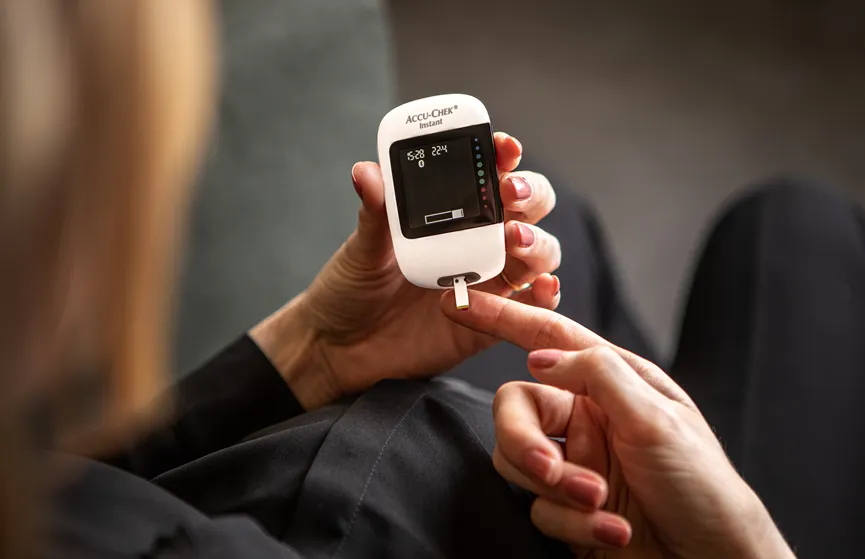Gestational diabetes
Insulin is a hormone that is needed for the cells to absorb sugar from the blood. During pregnancy, the body's cells become less sensitive to insulin, and the body is often larger than before. Then more insulin is needed to achieve the same effect as before, and sometimes the body does not succeed in producing this on its own. Then the blood sugar level rises and the woman can suffer from gestational diabetes, which can have consequences such as an impact on the development and growth of the fetus, an increased risk of preeclampsia and birth complications and low blood sugar for the child. After childbirth, the blood sugar level usually returns to normal, but there is an increased risk that the woman will suffer from type 2 diabetes later in life.
To get a diagnosis of gestational diabetes, a blood test called P-glucose is usually taken through a finger prick by your midwife. The test shows your blood sugar level at the time of sampling and is measured in mmol/liter. If the blood sugar level is too high, you may also submit a venous blood sample on an empty stomach, and in some cases also do a so-called glucose load.
Symptoms
An elevated blood sugar level often causes mild symptoms that are sometimes not even noticeable, but with very high blood sugar levels, you can experience symptoms such as fatigue, increased thirst and frequent urges to urinate.
Reason
Gestational diabetes can be hereditary to some extent. There is also an increased risk for those who have had gestational diabetes in the past, are overweight or have previously given birth to a child judged to be large in relation to the length of the pregnancy.
Treatment
Which treatment you receive depends on how high your blood sugar level is. Often it is enough to eat food that contains less sugar, eat regularly and spread the meals evenly throughout the day, and to be physically active. Sometimes you may need medication to lower your blood sugar.
Source: 1177 and Swedish Diabetes Association
Remote patient monitoring in case of gestational diabetes
You get access to a Bluetooth-connected blood glucose meter that you pair with a mobile app. When you measure your blood sugar, the values are automatically entered into the app. There you can follow the values over time through graphs and tables. If your blood sugar is abnormal, i.e. too high or low in relation to set limit values, your caregiver will receive a notification about this and can contact you for possible measures.
By detecting too high or too low blood sugar values in time and correcting them, the risk of both quick and slow complications is reduced.

